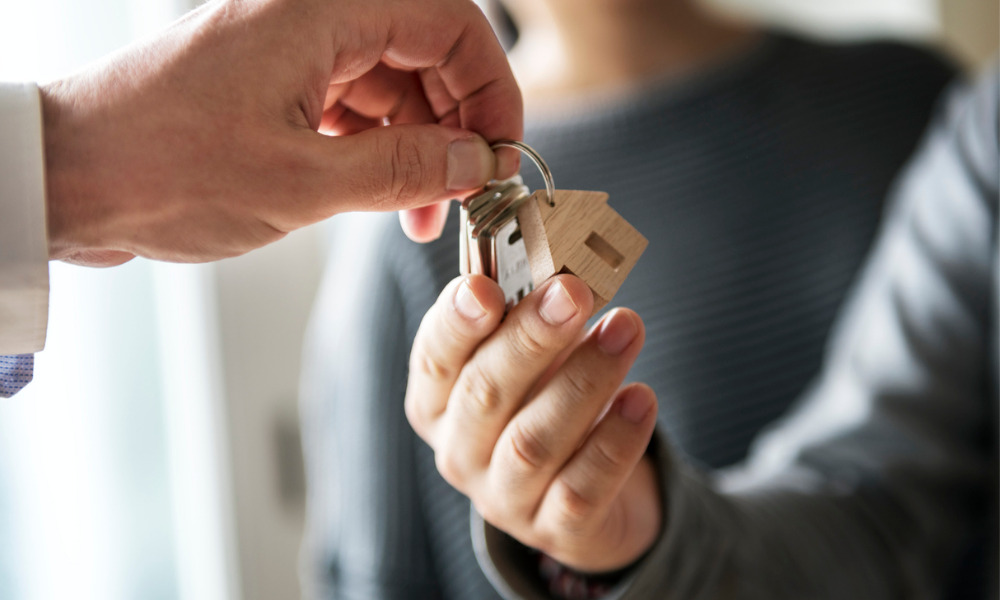Here are the pros and cons

Learn everything about rent-to-own schemes in this article.
Many Australians are having difficulty becoming homeowners thanks to increased cost of living, slow wage growth, and astronomical home prices. With affordability being what it is, it’s little wonder that the deposit has become synonymous with dread. That is why Australians are seeking out alternatives to become homeowners. Enter: rent-to-own.
What are rent-to-own homes?
Rent-to-own homes are rented out using leasing agreements that allow tenants to buy the home at the end of the lease period. The price that the home is ultimately bought for is previously agreed upon.
Rent-to-own homes make it easier for potential homeowners to climb onto the property ladder, because they delay the need to secure financing from lending institutions or banks and they also mean you can forego a traditional deposit. Since the future sale price is agreed upon beforehand, rent-to-own schemes also protect the home buyer from future property price increases. In some cases, this arrangement allows the homebuyer to purchase the property for a cheaper price.
However, this arrangement could work against the home buyer—for instance, if the market takes a downturn during the rental period. With rent-to-own schemes, the buyer also does not own any part of the house until the final payment is made, and they still need to apply for a home loan when the time comes to purchase the property at the end of the rental agreement.
How do rent-to-own schemes work?
The two components that comprise rent-to-own schemes are a standard rental agreement and the option to buy. Prior to signing any agreement, it is important to know the rules surrounding the scheme in each state as well as to get independent legal advice.
Potential home buyers who want to utilize the rent-to-own scheme sign a contract with a vendor that allows them the right to purchase the home at the end of the previously-agreed-upon rental period, which is usually between two and five years. Typically, rent-to-own schemes require a deposit that the aspiring buyer secures by applying for the First Home Owner Grant.
Buyers pay rent—which is usually higher than the market average—during the rental period, plus a continuous fee for the “option” to purchase the home at the end of the contract, with some requiring the buyer to pay for building maintenance, insurance, and stamp duty, or any other outgoings. The funds paid out for the option to buy during the rental period are typically deducted from the final sales price.
What are the advantages of a rent-to-own scheme?
One of the major advantages of a rent-to-own scheme is that the purchase price is set up front, meaning the buyer can plan for and save the necessary amount for the deposit and plan the financing with a lender. If, on the other hand, you are renting to save for a deposit, the property market could—and often does—continue to rise, meaning it will just take longer to save the right amount.
Another advantage is that you know what you are getting yourself into—you literally know the property. It can be a nightmare if you find out weeks prior to owning a home that it is not the dream you thought it was going to be. Most often, you can negotiate exiting the agreement without being forced to purchase anything you do not want to, depending on your agreement.
What are the disadvantages of a rent-to-own scheme?
But there are also downsides to a rent-to-own scheme. One is that the home’s value may decrease despite the locked-in price. Over the long term, the property market tends to rise in value, but the short term may not be such a sure thing. Like all markets, property values are largely dependent upon the impacts of supply and demand.
Another disadvantage to this scheme is that rents are more expensive. Fees for the option to buy add more to the rent than median rental prices in most suburbs. Usually, option-to-buy fees are between 1-5% of the purchase price.
What are the costs associated with a rent-to-own scheme?
The costs of a rent-to-own scheme vary widely, depending on the value of the property. But most of the time, the costs that you will incur when renting include a non-refundable deposit that is included in the overall cost of the home. Another common cost is the option fee, which can be as high as 5% of the total amount required to purchase the property. Homeowners’ fees for maintenance and insurance are also common costs.



